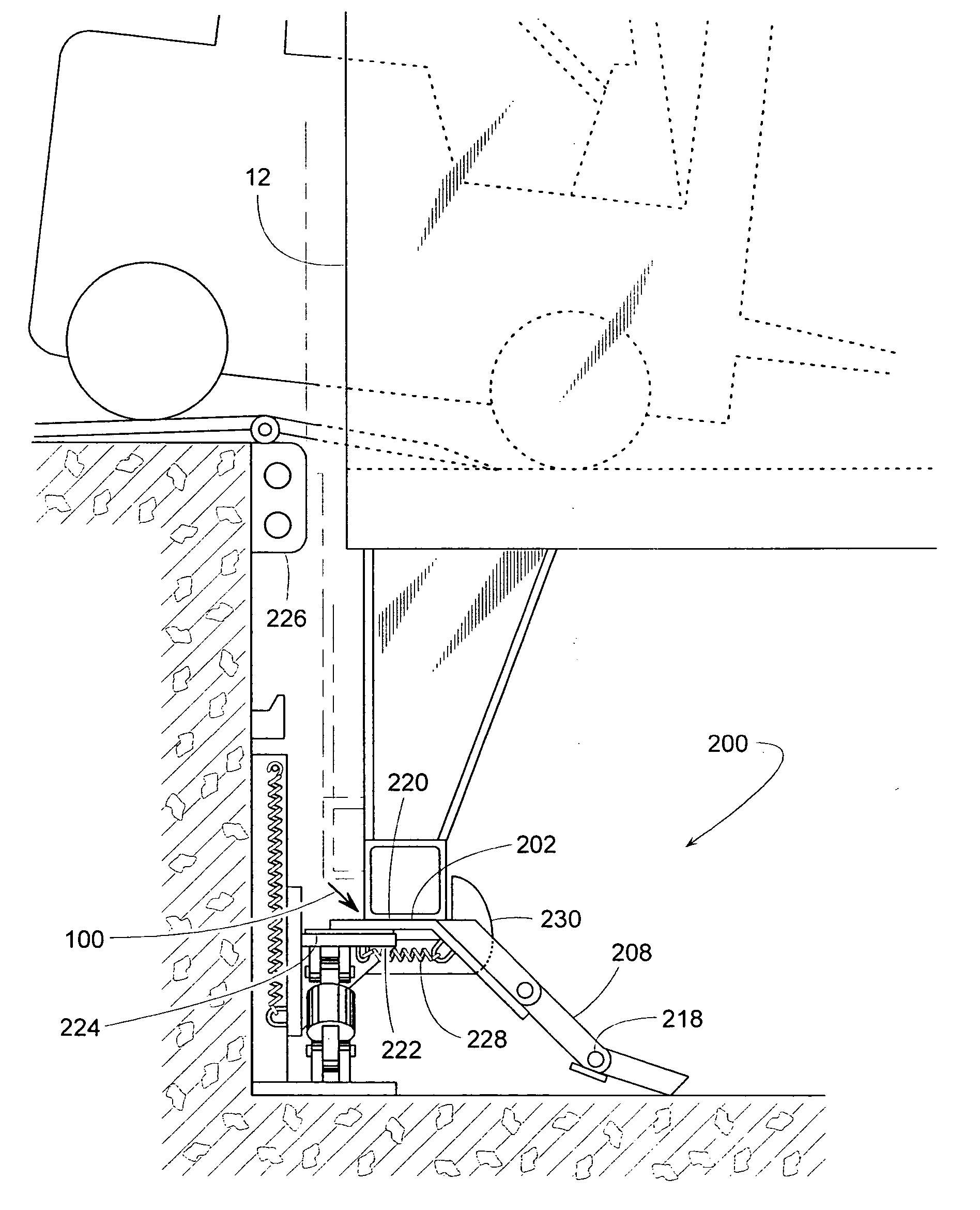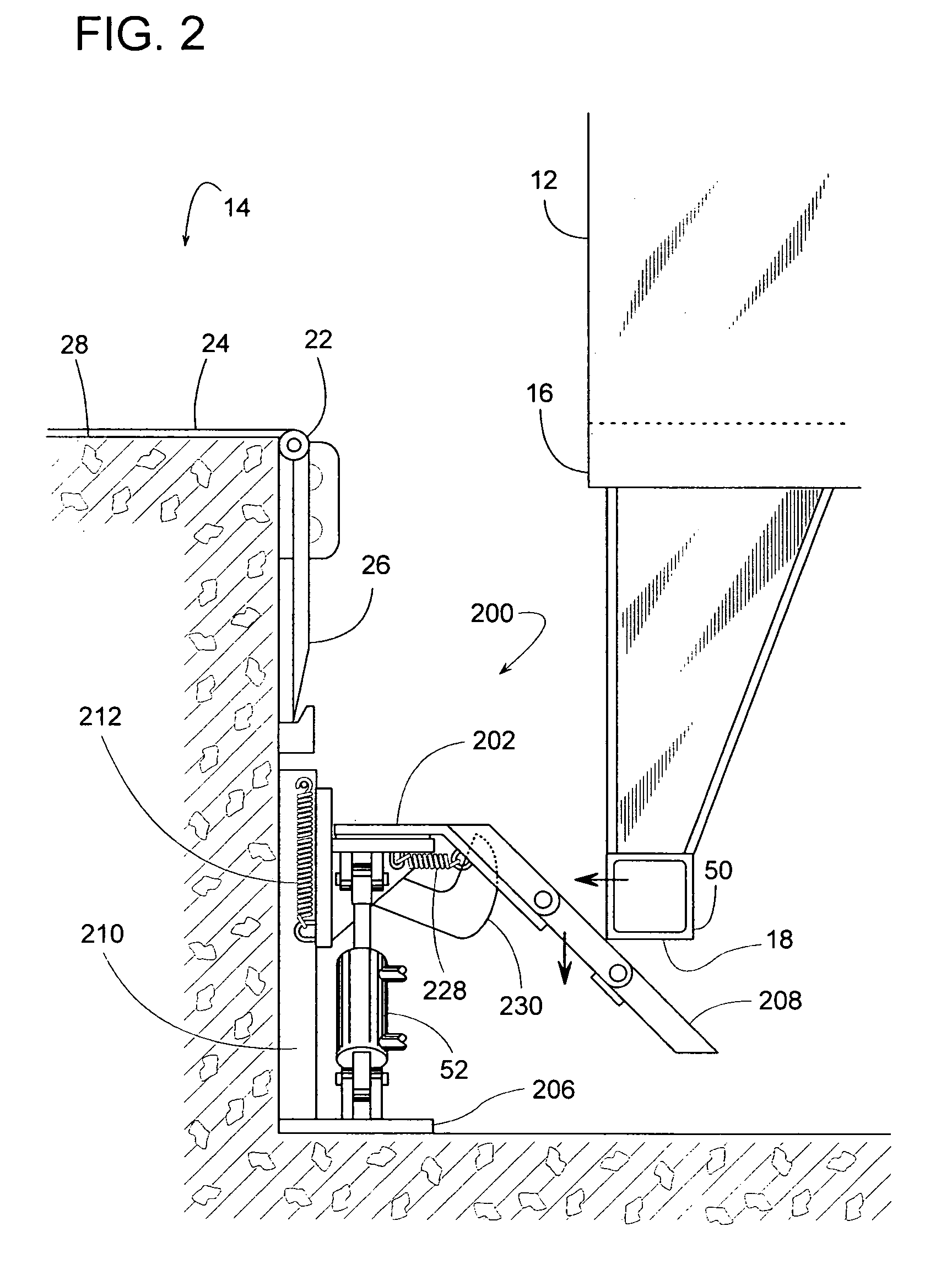Brace system and method for a vehicle at a loading dock
a technology for loading docks and brakes, which is applied in domestic applications, loading/unloading, storage devices, etc., can solve the problems of premature wear of seals, excessive weight of forklifts and cargoes, and increased load on truck beds
- Summary
- Abstract
- Description
- Claims
- Application Information
AI Technical Summary
Benefits of technology
Problems solved by technology
Method used
Image
Examples
Embodiment Construction
[0051] For a cargo transport vehicle such as a truck or trailer parked at a loading dock, various embodiments of vehicle braces can be used to help hold the rear edge of the vehicle steady (particularly in the vertical direction) as the vehicle is being loaded or unloaded of it cargo, through augmentation of the vehicle's onboard suspension system. Although various vehicle braces will be described, each of the braces includes a support member that is movable to a preparatory position where the support member can provide an upward reactive force against the vehicle in reaction to a downward force exerted by the vehicle against the support member. In some embodiments a control system moves the support member to it preparatory position, and in other cases, it is the vehicle itself that moves the support member into position.
[0052] Once in the preparatory position, the magnitude of the reactive force exerted by the support member upward against the vehicle can depend on the particular ...
PUM
 Login to View More
Login to View More Abstract
Description
Claims
Application Information
 Login to View More
Login to View More - R&D
- Intellectual Property
- Life Sciences
- Materials
- Tech Scout
- Unparalleled Data Quality
- Higher Quality Content
- 60% Fewer Hallucinations
Browse by: Latest US Patents, China's latest patents, Technical Efficacy Thesaurus, Application Domain, Technology Topic, Popular Technical Reports.
© 2025 PatSnap. All rights reserved.Legal|Privacy policy|Modern Slavery Act Transparency Statement|Sitemap|About US| Contact US: help@patsnap.com



